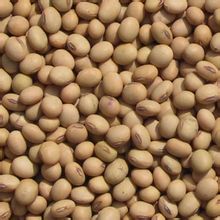 China's soybean imports hit another record high. The General Administration of Customs released data on the 10th, saying that in 2012 China imported 58.38 million tons, an increase of 11.2%, and the average import price was US$599.3 per ton, up 5.8%.
China's soybean imports hit another record high. The General Administration of Customs released data on the 10th, saying that in 2012 China imported 58.38 million tons, an increase of 11.2%, and the average import price was US$599.3 per ton, up 5.8%. At the same time, the domestic soybean production and processing industry continued to shrink, which again caused the attention of the relevant departments. It was learned from sources that the relevant State Council and the Soybean Association concerned are currently conducting research on the soybean industry in the northeastern producing areas. Many ministries and commissions such as the Ministry of Agriculture, the Ministry of Finance, the Ministry of Commerce, and the Ministry of Industry and Information Technology are also working on a new soybean policy.
Statistics show that in recent years, China’s soybean imports have been increasing year by year. In 2012, imports increased by 189% compared to 2004. In 2011, domestic soybean production was only 14.49 million tons, and the external dependence on soybeans reached 80%.
Li Guoxiang, a researcher at the Institute of Rural Development of the Chinese Academy of Social Sciences, said that the high level of imported innovation indicates that the demand for soybeans in China is still increasing as a whole. Due to the high degree of foreign dependence, the transmission and impact of international market prices on domestic markets is very obvious, and there are hidden dangers in food security.
Xu Xuegao, rural economic research center of the Ministry of Agriculture, believes that because of the comparatively low benefits, the planting area of ​​soybeans in Northeast China has been decreasing by 20% each year in recent years, from 60 million mu in 2009 to 40 million mu, and farmers have switched to corn and rice in large quantities. Now domestic soybean yield is about 230 pounds per mu, and importing 58 million tons of soybeans is equivalent to "importing" about 400 million mu of cultivated land.
"Even though soybean imports help to ease the contradiction between domestic soybean supply and demand and stabilize market prices, it is still necessary to maintain the self-sufficiency ratio of soybeans at a reasonable level." Li Guoxiang believes that domestic soybean production and national reserves should reach 20 million to 30 million tons. Only in this way can we have the right to speak in the international market. If there are large fluctuations in speculation and prices in the international market, China can respond by adjusting the rhythm and intensity of imports.
Xu Xuegao said that in addition to the production process, the soybean policy should also be considered from the perspective of the entire industry chain such as acquisition, processing, and circulation. According to reports, the domestic soybean processing enterprises purchased from the raw materials, storage to management, processing, compared to the cost of imported soybean processing enterprises in the coastal area of ​​70 to 80 yuan per ton. In addition, soybean imports can take the form of letter of credit loans, delay 3 to 6 months payment, and domestic soybean procurement is a cash transaction, the company's capital costs are higher.
At present, the industry and food experts have high expectations for adjusting the soybean price support policy, in which the subsidy is considered to be a better policy tool to replace temporary storage. Li Guoxiang believes that the temporary storage and storage of soybeans is a serious drawback. If enterprises purchase temporary storage soybeans sold at a price, the cost will be significantly higher than the purchase of imported soybeans, resulting in a lack of market competitiveness for domestic soybean processing enterprises. The state needs to strengthen and improve the support and protection policies for soybeans and rationalize the price mechanism.
It is understood that the subsidy for difference, that is, the establishment of a target price that can enable farmers to obtain a reasonable return, the price is higher than the difference between the market price, the government to subsidize the farmers. Xu Xuega believes that through the way of subsidy, there will be three prices in the market, including the minimum purchase price, market price, and target price. Such a price system can guarantee the reproduction of farmers and increase income, and at the same time, it can also use the market pricing mechanism. Like the temporary purchase and storage price, it has an excessive impact on the market.
Smart thermometer is a new type of thermometer that can provide treatment according to a patient's temperature. The thermometer can also send information to a doctor's phone, making it easier for patients to communicate with their doctors
The working principle of smart thermometer is to convert the body temperature data collected by thermal temperature sensor to a/D by Internet of Things RFID technology, and then transmit the data to smart phone or cloud server through Bluetooth or WiFi technology
Compared with traditional thermometers, intelligent thermometers measure body temperature more accurately, and the measurement process is very humane. Most thermometers in the market measure axillary temperature. Wearable smart thermometers can be directly attached to the armpit with medical tape to measure body temperature. 24h continuous monitoring, high and low temperature alarm, fever treatment suggestions, and even water temperature testing are all advantages of smart thermometers compared with traditional thermometers
Infrared Thermometer,High Precision Thermometer,Voice Infrared Thermometer,Portable Electronic Thermometer
ChangChun E-vida Technology Co.,ltd , https://www.evidatech.com